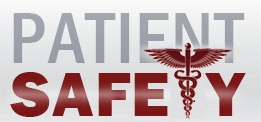Effective Communication Directly Linked to Quality Patient Care

A new report released by Healthgrades suggests that hospitals with the highest patient ratings for physician and nursing communications on average have had fewer problems with patient safety issues. The report analyzed patient safety data for hospitalizations between 2008 and 2010 and found that quality communication among healthcare workers led to fewer surgical inpatient deaths with treatable complications among other preventable conditions. Key research findings in the report include:
- 15% more overall patient safety events occurred in hospitals performing in the bottom 10% for physician communication, compared to those in the top 10%;
- 27% more overall patient safety events occurred in hospitals performing in the bottom 10% for nursing communication, compared to the top 10;
- 13% more patients at hospitals performing in the top 10% for patient satisfaction reported they received instructions on what to do when they left the hospital, compared to the bottom 10% — key guidance that underscores the importance of communication, according to the report.
Kristin Reed, vice president of clinical quality programs at HealthGrades and the author of the report said that hospitals need to improve on information extraction from patients and not assume that the absence of questions or responses means that someone fully understands everything they have been told.
The report analyzed approximately 40 million Medicare hospitalizations in 5,000 hospitals from 2008 to 2010. The analysis was conducted using a method developed by the Agency for Healthcare Research and Quality (AHRQ) to calculate event rates for 13 indicators of patient safety. Using this data as the basis for the report, Healthgrades estimates 254,000 patient safety events among Medicare patients could have been prevented, and 56,367 Medicare patients who died experienced one or more of these events.
Communication in healthcare is increasingly coming under the microscope from industry analysts and watchdogs as well as consumers themselves who have greater access to an explosion of information and data about the industry in addition to peer reviews and testimonials. It seems as if there has been a significant power shift from the industry to the consumer during the information age as transparency now rules and healthcare facilities are no longer able to mask their problems and sweep them under the rug. We applaud the patient safety movement and hope that more within the healthcare industry take notice and start to explore some of the new technological solutions available that directly impact the level of patient safety.
What’s your take? How have you observed patient safety initiatives having a direct impact on the quality of healthcare?










